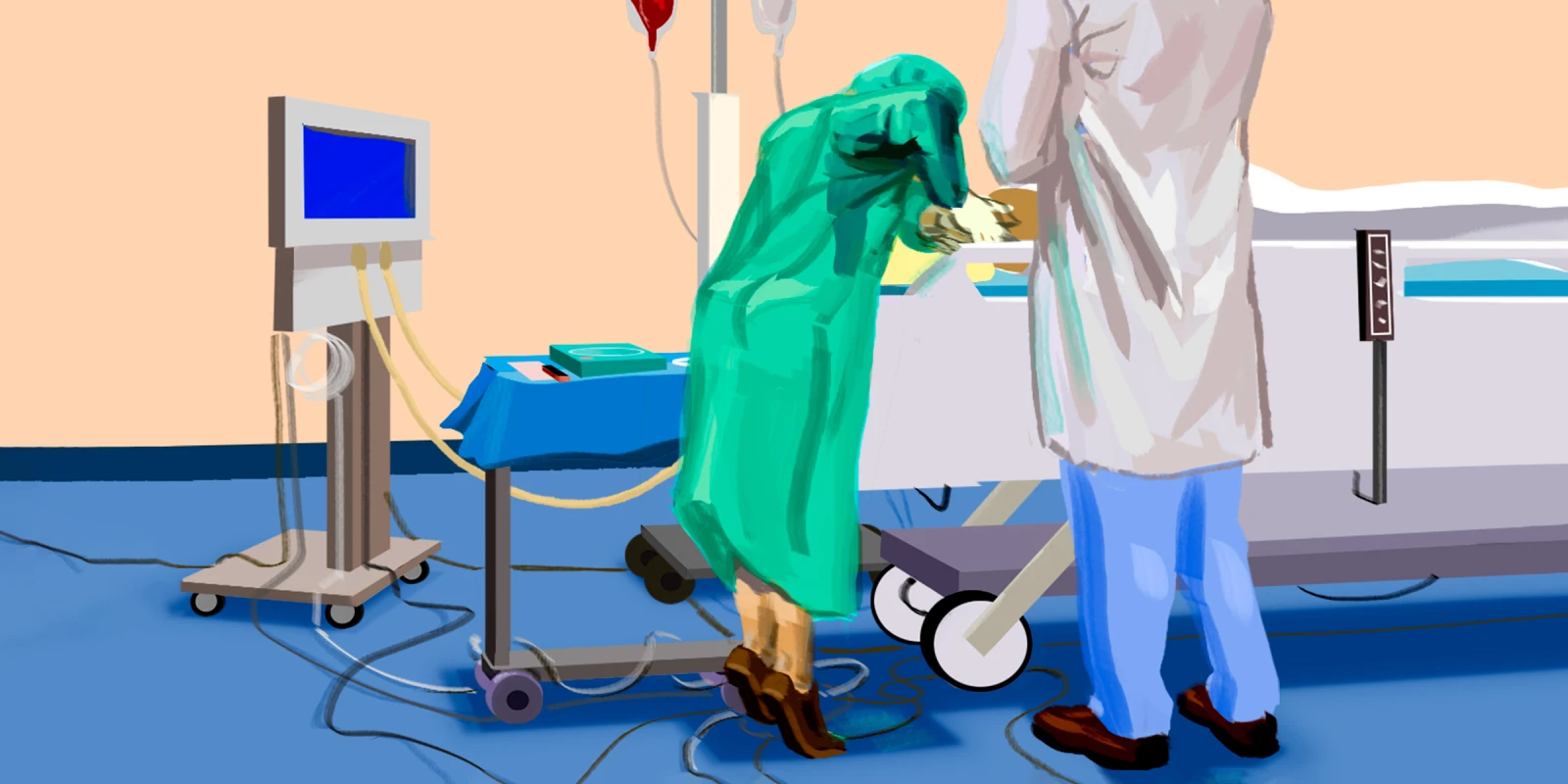Although there is the implicit understanding that residents at teaching hospitals will be practicing on patients, some patients are still unaware. We try to make practicing safe, but the first time you do any procedure on a patient — even if well-supervised — it is more dangerous than it would be in more experienced hands.
I recently had the opportunity to place a Swan-Ganz catheter in the ICU. I was supervised by an anesthesia fellow who had placed countless Swans — she reassured me. The patient was sick but lucid enough to consent for himself and to understand the circumstances, and, moreover, he was very nervous about the procedure. To make matters worse (and more nerve-racking for me and the patient), there was a gaggle of other doctors, nurses, and APPs gathered at the bedside to watch the line placement. Many people were there to help, but more people were there to learn. After all, new nurses needed to learn to work the Swan tubing since the fresh liver transplants always come up with a Swan. And there is the traditional saying: see one, do one, teach one.
Never having seen a Swan floated in real life, I watched a YouTube video on my phone in the call room just prior. I reminded myself I had placed countless successful central lines and the Swan was similar, just more nuanced. Just before setting up for the line, the patient, very astute and knowing I was only in my second year of training, asked me how many Swans I’d done. The anesthesia fellow answered before I had a chance to respond. She told the patient she had done many of these lines and would be supervising, not to worry.
Ultimately, I floated the Swan smoothly, advancing rhythmically with every heartbeat until I saw the pulmonary artery tracing I had studied in medical school and then again in the minutes prior to the line placement. But I have been thinking a lot about the moment when the patient realized he was truly being practiced on. Maybe he had an inkling when people gathered around his bedside — none of them asking if it was OK for them to be there because we take it for granted that we are there to learn, and we do have to learn first by watching. Maybe he realized when I was seconds away from admitting to him it was my first Swan — though I would have reassured him it was one of many central lines. Was he OK with it? He had to be.
Nothing about my Swan placement was unsafe. The anesthesia fellow walked me through it before and during, and we even debriefed after. However, there was much more room for error with it being my first time than had the anesthesia fellow done it herself. A similar vignette to my Swan placement occurs daily in every teaching hospital across the country. Often mistakes are made, and most often — at least in surgery — because they are anesthetized, patients aren’t aware that we are truly practicing on them.
Yes, at the end of the day it is the attending's name that is on the surgical consent, and yes, they are responsible for teaching us and accepting responsibility for us and our complications. But how many people go into their surgery realizing that while the attending surgeon has all the experience, the person actually doing many parts of the surgery may not?
Firing a stapler on a pig intestine cannot truly mimic stapling off an appendix for the first time. Nothing is quite like the excitement of dissecting your first gallbladder off the cystic plate — it is challenging at first, but slowly starts to feel more familiar (not at all like in simulation sessions). What about the notorious open gastrostomy tube? Imagine me, knife in hand, standing across from my senior resident. The attending is scrubbed but far and aloof from the table, talking with the scrub nurse. My senior guides me safely and slowly through an abdominal entry and tells me to grab the stomach. I confidently grab what I believe to be the stomach (really it’s the transverse colon) and am mere seconds away from bovie-ing into the colon when the attending comes over, gasps, and says, “That doesn’t look like the stomach.”
As we progress in residency, the stakes only get higher, the mistakes only get more devastating, and the responsibility only gets greater. We believe in graded autonomy and as residents, we have people around us to support us and help fix our mistakes inside and outside the OR. But sometimes it is a heavy weight to step back and realize you are truly practicing on another human being — for it is a privilege to learn by doing.
Have you had an experience with a patient who realized they were being used for practice? Share in the comments.
Caitlin J. Cain is a second year surgical resident at New York Presbyterian/Weill-Cornell Medical Center. She is an aspiring pediatric surgeon and is interested in medical humanities as a means for enhancing clinical practice. She enjoys visiting art museums, playing piano, and reading. Follow her on twitter @joelle_caitlin.
Illustration by Jennifer Bogartz







